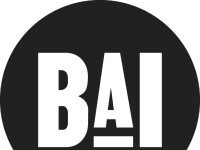 A new report from the Centers for Disease Control and Prevention examines current rates and historical trends of youths’ experiences regarding sex, substance abuse, violence and other risky behaviors. This data can be useful to college student affairs personnel as they plan programs to address risky behaviors on campus. Some of the data is broken down by race. Here are some of the highlights of the report.
A new report from the Centers for Disease Control and Prevention examines current rates and historical trends of youths’ experiences regarding sex, substance abuse, violence and other risky behaviors. This data can be useful to college student affairs personnel as they plan programs to address risky behaviors on campus. Some of the data is broken down by race. Here are some of the highlights of the report.
- The percentage of high school students who have ever had sex has dropped significantly over the past 10 years. In 2017, 45.8 percent of Black high school students reported that they had sex at some point in their lives compared to 38.6 percent of White high school students. A decade ago, two thirds of Black high school students reported that they had sex.
- Nearly 15 percent of Black high school students said that they had four or more sexual partners, compared to 8.6 percent of White high school students. A decade ago, 27.6 percent of Black high school students reported four or more sexual partners.
- Black high schools students are slightly less likely to use a condom during sex. Overall condom use is just over 50 percent.
- Just over 11 percent of Black high school students reported that they had ever used illegal drugs. This was slightly lower than the rate for White high school students.
- Nearly 2 percent of Black high school student reported they had injected illegal drugs compared to one percent of White high school students.
- Some 9 percent of Black high school students said they did not attend classes at some point because they feared for their safety. This was nearly twice the rate for White high school students.
- About 11 percent of Black high school students said they were victims of cyber bullying, compared to 17.3 percent of White high school students.
- More than 10 percent of Black high school students said they had been victims of dating violence. For White high school students, the rate was 7 percent.
- About 30 percent of both White and Black high schools students reported persistent feelings of sadness or hopelessness, but White youths were slightly more likely that Blacks to consider suicide.
The full 91-page report, Youth Risk Behavior Survey: Data Summary and Trends Report, 2007 to 2017, may be downloaded by clicking here.










